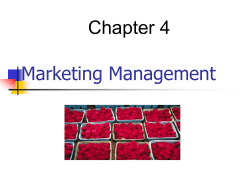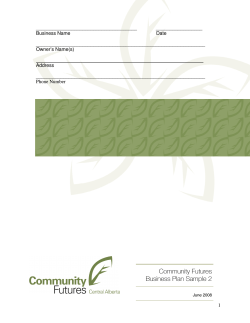
Advertising vs. PR: How to measure the value of editorial coverage
Advertising vs. PR: How to measure the value of editorial coverage By Jessica Epperly | Posted: April 4, 2011 One major and obvious factor that differentiates advertising from publicity is that advertising is paid placement and publicity is free editorial placement. There is another fundamental difference: Advertising is telling consumers how great you are, and publicity is a third party (usually some media outlet) singing your praises. The relative impact and objective of each are very different. Public relations can benefit over time from—and is designed to work in conjunction with—advertising and specific marketing initiatives. The primary focus of public relations is on the credentials of the medium and the quality of the news value. Because PR usually involves having the media cover a story, these stories can live on long past the immediate impact of advertising. When assessing the monetary value of publicity, many public relations professionals use a simple equation to put a dollar value on a specific placement. This value is determined by first knowing the advertising value. Advertising values are largely determined by the reach of a specific medium. This is why a 30second TV commercial on a local broadcast would be a fraction of the cost of a prime-time national rotation. PR takes the value of advertising and builds upon it based on enhanced impact. Editorial is thirdparty opinion, so the impact is considered three times that of a paid advertisement. For instance, if a half-page ad in the local newspaper costs $500, then a half-page worth of editorial in the same newspaper would be valued at $1,500. There is also something called page rank. Whether your story appears at the beginning or the end of a magazine can impact the media value. Also, if your story appears on the top left side of a page, it is often valued higher, because statistically people tend to read the top left side first and spend more time looking left when paging through a magazine or newspaper. Your editorial could end up on the same page as a competitor’s advertisement, thereby damping the impact. It is important when considering your advertising and public relations budgets to think about the kind of impact you want to have. For example, if you’re promoting an evening of events, put more of your budget toward advertising, because the call to action needs to be instantaneous and short-lived. If you want to increase general awareness of your brand or bring attention to your organization’s cause, editorial would be the preferred method, as you want your message to have a much stronger and longer lasting impact through third-party opinion and strategic messaging. Jessica Epperly has worked in the field of public relations for nearly a decade. She currently serves as a senior publicist at The Wakeman Agency and is responsible for developing campaigns to gain national attention for a diverse client list.
© Copyright 2025





















